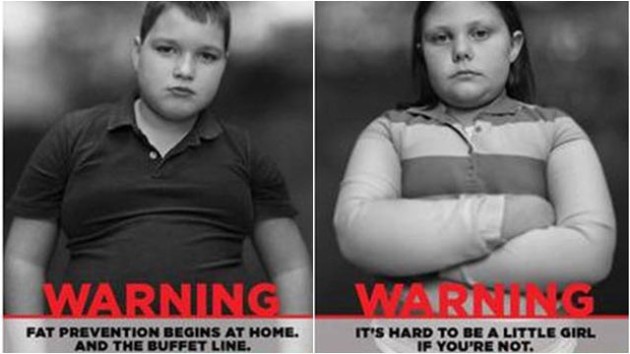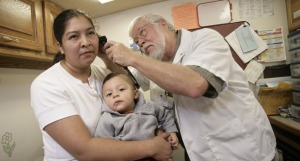Congress shall make no law respecting an establishment of religion, or prohibiting the free exercise thereof; or abridging the freedom of speech, or of the press; or the right of people peaceably to assemble, and to petition the Government for a redress of grievances.
The First Amendment gives the press the right to publish news, information and opinions without the government interfering. This also means people have the right to publish their own newspapers, newsletters, and magazines. The term “Press” became generally known in our country when our founding fathers wrote freedom of press in the Bill of Rights, during the time when the printing press was the most popular form of mass communication (The 5 First Amendment Freedoms).
Having a free press dates back to the late 1400’s in England, when the man by the name of William Caxton set up the first British printing press. He was completely free to print whatever he wanted because there were no laws governing the press (Pember 34). Henry VIII soon published a list of forbidden books and required printers to be licensed. Any violators were charged with treason and tried before a Star Chamber Court (Stein 13).
Seditious libel laws were created and used to punish those who criticized the government or the crown albeit it being truthful or not. Licensing laws were also devised that required printers to obtain prior approval from the government or the church before any printing could be done (Pember 34). English newspapers were censored or closed down with difficulty. As Parliament moved toward military action, press controls were disintegrated and the Star Chamber abolished (Smith 21).
The U.S had laws restricting freedom of press for about 30 years before the first newspaper was published. It was a crime to publish anything without government approval in 1662 in the state of Massachusetts. America’s first paper was Publick Occurrences. Because Benjamin Harris failed to get permission for this first edition, which contained construed material of the British policy, second and all subsequent issues were banned (Pember 35).
The most famous case of government censorship in America was that of John Peter Zenger (Pember 35). Zenger was considered a clumsy writer and only a fair printer. In 1773 he established the New York Weekly Journal, which was considered a unimpressive newspaper. It was a small, four-page wobbly sheet, with dull make-up(Stein 15). Zenger’s newspaper made many attacks towards New York’s governor, William Cosby (Pember 35). These attacks brought criminal libel charges against Zenger. He spent none months in jail before he appeared in court along with his lawyer, Andrew Hamilton (Stein 16). Hamilton was able to convince the jury that no man should be imprisoned for or fined for publishing criticism of the government that was both truthful and fair. The jury ignored the law and acquitted Zenger of all charges, an example of what today is known as jury nullification (Pember 35).
John Peter Zenger’s victory did not mean the end of press controls. The heavy hands of the crown fell on editors for years to come. However it did lay the foundation for liberty of expression. It encouraged others editors to defy English Authority, and did nothing to stop British attempts to control the press in American colonies. Eventually, the guarantee of free press was written into the Constitution(Stein 17).
In 1798 the Federalist passed The Sedition Act, resurrecting the law of seditious libel (Emord 86). This made it illegal to write or publish any “disloyal, profane, scurrilous or abusive” material about the federal government (Stein 20). It was allegedly necessary to guard American neutrality against French influences but was used to silence the republicans (Emord 86). Federalist believed that the term freedom of press meant freedom from later penalty for unprotected forms of expression such as criticism of government (Smith 164).
The Act forced James Madison to articulate more fully of his understanding of the antigovernment focus of the amendment. He enumerated his objections in his “Report on the Virginia Resolutions” in the Virginia House of Delegates. Congress refused to renew the Act in 1801, when the Federalists lost at the polls to the Jeffersonian Republicans (Emord 86).
While the government was trying to censor the press or the media, as we now call it, was developing it’s relationship with sports. The earliest known development was from the Boston Gazette on March 5, 1733. Newspapers usually pertained to the wealthy and better educated. The 1830’s and 1840’s witnessed a marked change in newspapers and their readership. This was known as the Penny Press era. During this time, newspapers mainly covered horse racing if and only if it was relevant to a large social context. To fill that void on sports coverage from newspapers, sports magazines emerged and became quite popular. (Ibelema 187).
In 1895 Guglielmo Marconi was one of the first to demonstrate that a message could successfully be communicated by radio. The world’s governments quickly became interested in the possibilities of Radio (Emord 138). The First International Radio Telegraphic Conference was held in Berlin, drawing representatives from Austria, France, Germany, Great Britain, Hungary, Italy, Russia, Spain, and the U.S. Nations began using radio for military communications. By 1904 twenty-four U.S. Navy ships were equipped with radio telegraph systems (139).
The Civil War brought about a sport called baseball, in which troops from both sides played when the time permitted. Newspapers were very influential in this development (Ibelema 189). The reporting of sports in newspapers during the 1870’s through the 1890’s, brought about America’s love affair with sports (Ibelema 190). Military leaders thought that keeping their soldiers, sailors and pilots who were posted overseas abreast of sporting events back home was good for their morale. They were able to do this through the radio (Ibelema 192). Shortly after radio was developed, Congress passed a law that required all U.S. passenger ships to have a radio. The Radio Act of 1912 was adopted by the federal legislature, which required all radio transmitters and radio operators be licensed by the federal government. Radio Stations began sprouting everywhere causing radio signals to overlap and block each other (Pember 584). To end this chaos, Congress adopted Radio Act of 1927, a set of rules aimed at creating order caused from too many people trying to broadcast radio signals( Emord 171).
The mid 1900’s brought about a new medium of technology called the newsreel. The most popular newsreel features were clips from sporting events(Ibelema 195). Radio had the capability of infusing the immediacy of live sports coverage with drama in ways that were never possible before(196). Television allowed sports fans to experience their games with detail. Television provided moving pictures to accompany the sounds that radio offered. The press along with new technology was advancing in a whole new era (198).
The free flow of information is a vital part of or democratic system. The press acts as a market place where ideas, opinions and theories are served up to citizens for their acceptance or rejection(Stein 11). The concept is that the truth naturally overcomes falsehood when they are allowed to compete(Smith 31). Even in a democracy the mass communications media always face the danger of having their freedom chipped away(Stein 173).
If we are to avoid the losses of freedom that would be associated with content and the structural controls on the new media forms, it will be imperative for the courts to embrace the First Amendment print model standard and apply it to the new form (Emord 310). The Preservationist Perspective will ensure that the blessings of a free press are enjoyed in their fullest latitude by the next generation(311).



